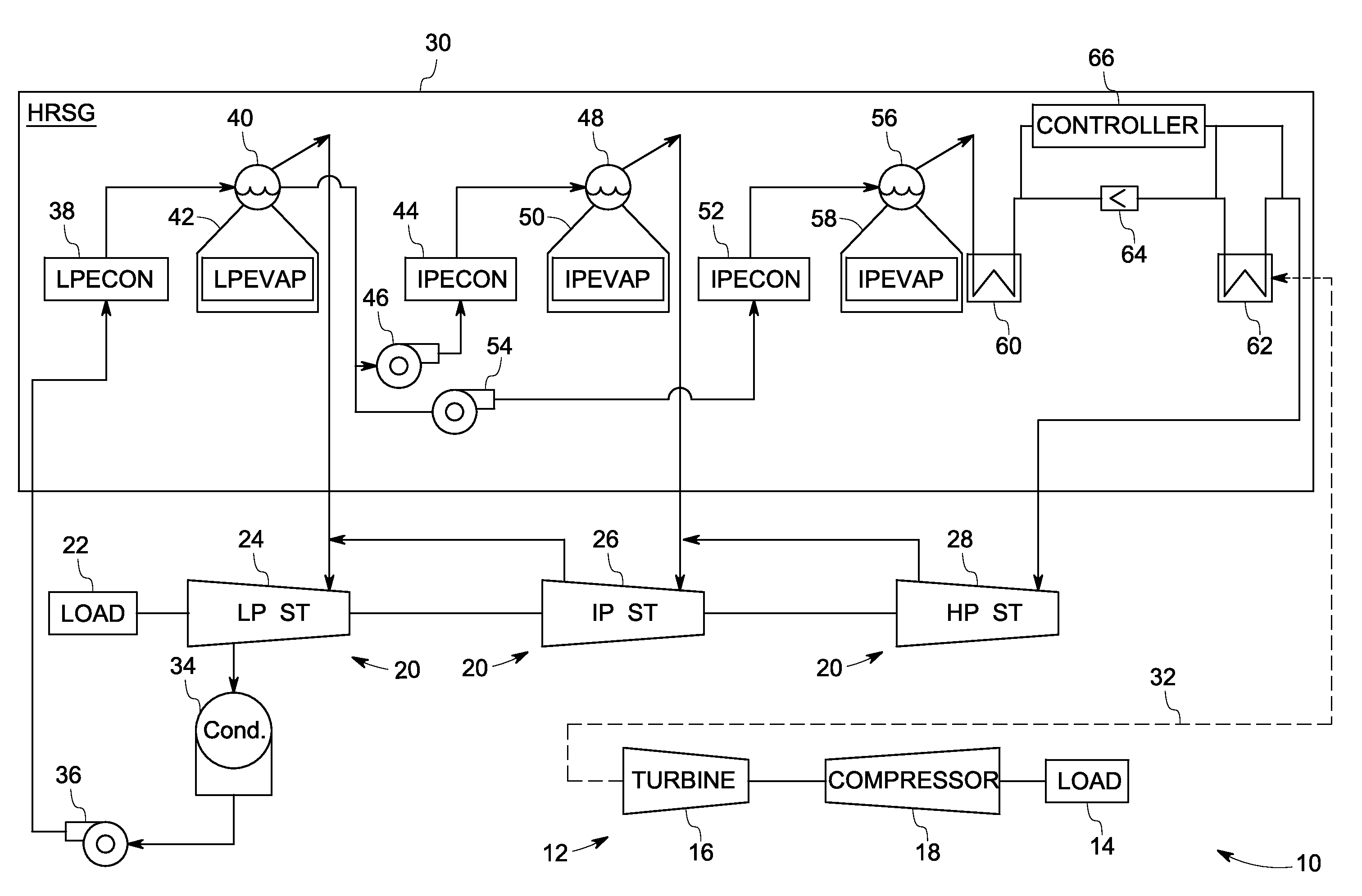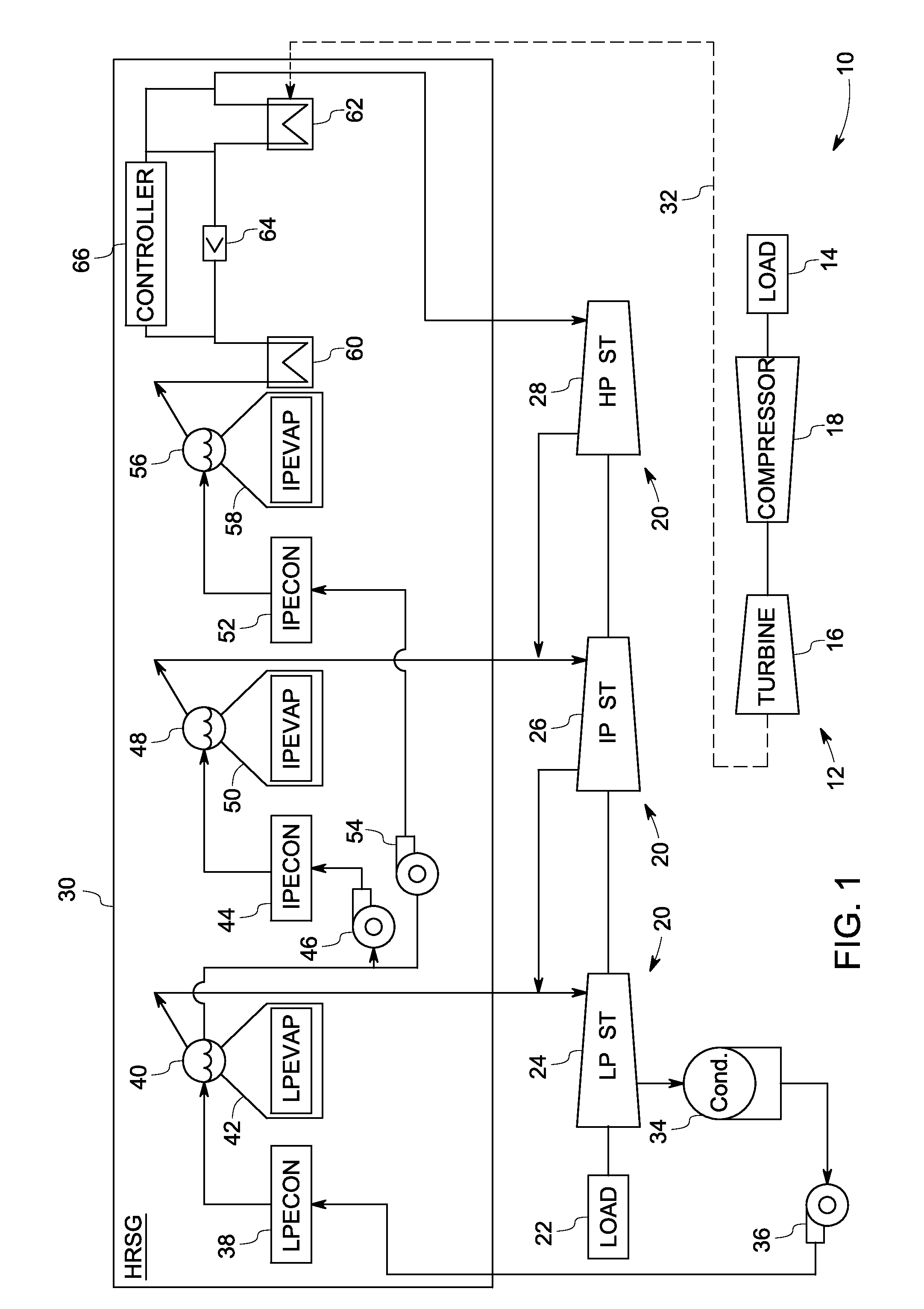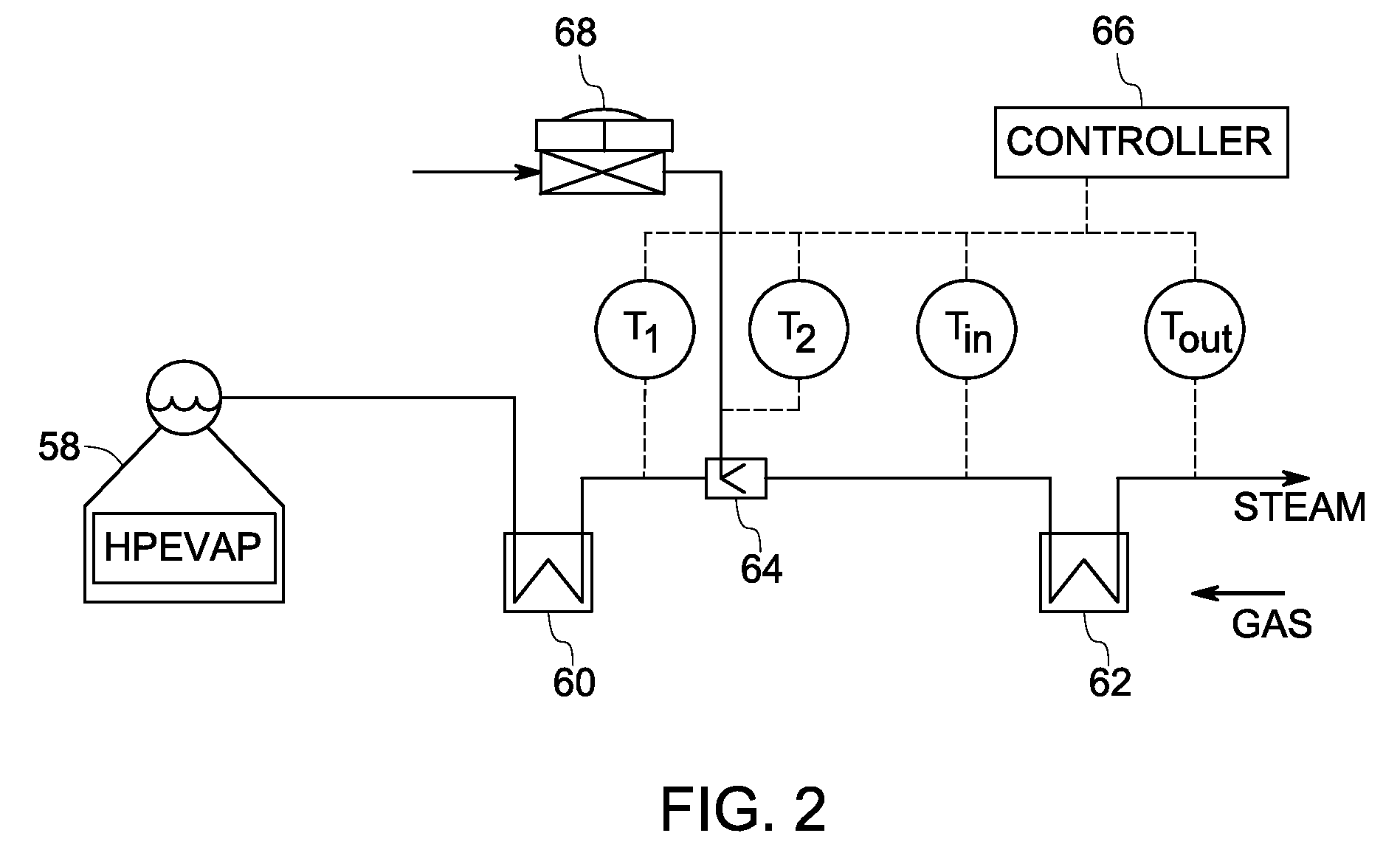Single loop attemperation control
a control system and single loop technology, applied in steam engine plants, steam superheaters, steam regeneration, etc., can solve problems such as shortening the life cycle of control measures, adverse effects on steam turbines, and shortened life cycles, and affecting the operation of steam turbines downstream of hrsg
- Summary
- Abstract
- Description
- Claims
- Application Information
AI Technical Summary
Benefits of technology
Problems solved by technology
Method used
Image
Examples
Embodiment Construction
[0016]The present techniques are generally directed to a control system and method for controlling operation of an inter-stage attemperation system upstream of the finishing superheater, further controlling the outlet temperature from the finishing superheater. The control system includes a feed-forward and a feedback control and employs valve characteristics calculation for converting attemperating flow to valve demand for controlling temperature. In particular, embodiments of the control system may determine if attemperation is desired based on whether the outlet temperature of steam from the finishing superheater exceeds a set point temperature as well as whether the inlet temperature of steam into the finishing superheater approaches or is less than the saturation temperature of steam.
[0017]When introducing elements of various embodiments of the present invention, the articles “a,”“an,”“the,” and “said” are intended to mean that there are one or more of the elements. The terms “...
PUM
 Login to View More
Login to View More Abstract
Description
Claims
Application Information
 Login to View More
Login to View More - R&D
- Intellectual Property
- Life Sciences
- Materials
- Tech Scout
- Unparalleled Data Quality
- Higher Quality Content
- 60% Fewer Hallucinations
Browse by: Latest US Patents, China's latest patents, Technical Efficacy Thesaurus, Application Domain, Technology Topic, Popular Technical Reports.
© 2025 PatSnap. All rights reserved.Legal|Privacy policy|Modern Slavery Act Transparency Statement|Sitemap|About US| Contact US: help@patsnap.com



